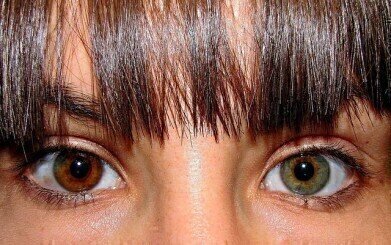Electrophoretic separations
Predicting Eye and Skin Colour
Oct 27 2015
Forensic science is portrayed as a glamourous, hi-tech world on television. Programmes like CSI play a role in attracting people to become forensic scientists — but behind the glitz and glamour there are scientists who have a serious and difficult job to do.
One of the roles they have to carry out is to help in the identification of human remains — bodies of people that might have simply gone missing, or have been buried following a crime or even genocide. DNA is often thought as the panacea for identification — but it is not always that simple.
If there was no match on the DNA database — the DNA sample was of limited use. But with increasing knowledge about genetics and technological advances — DNA from bodies with no database match can tell us a great deal. A recent paper in the Journal of Forensic Sciences titled ‘Assay Development and Validation of an 8-SNP Multiplex Test to Predict Eye and Skin Coloration’ highlights just what we can find out using from human remains.
Genotype and phenotype
The key to predicting what features someone might have is found in our DNA and in particular it is due to a feature called single nucleotide polymorphism or SNP. The code carried by our DNA is our genotype, but what is represented on the surface, our characteristics, is the phenotype. The relationship between the two is sometimes represented by the equation:
Genotype + environmental factors = phenotype
Our genotype might carry the code for blue eyes and brown eyes — but only one is expressed (in this case brown eyes as that is the dominant gene). Getting information from our genotype to predict characteristics like eye or skin colour uses SNP.
Interpreting the DNA with SNP
Recent studies in genetics have shown that variations at particular points in certain gene can be used to predict some characteristics. These particular variations are known as SNPs, and they basically mean that one base (A, C, G or T) is replaced by another in that particular location. The models used to predict each trait, eye colour or skin pigmentation, have to take into account that each trait might be coded for on several genes — in the paper mentioned above the model looks at eight SNPs or different variations to determine eye or skin colour.
The team sampled DNA from volunteers, then following standard treatments to amplify and extend the DNA a set of oligonucleotides were analysed using capillary electrophoresis. Improving the performance of DNA testing, including for SNP arrays, is discussed in this article, Uniformity Across the Block on Chromatography Today.
The results reported by the team using the new 8-SNP multiplex array test suggest they have an accurate and robust model that can predict eye and skin colour of individuals using DNA samples. The science really is even more remarkable in real life — move over CSI.
Image by Xavier Nájera via Wikimedia Commons
Events
Jan 20 2025 Amsterdam, Netherlands
Feb 03 2025 Dubai, UAE
Feb 05 2025 Guangzhou, China
Mar 01 2025 Boston, MA, USA
Mar 04 2025 Berlin, Germany














